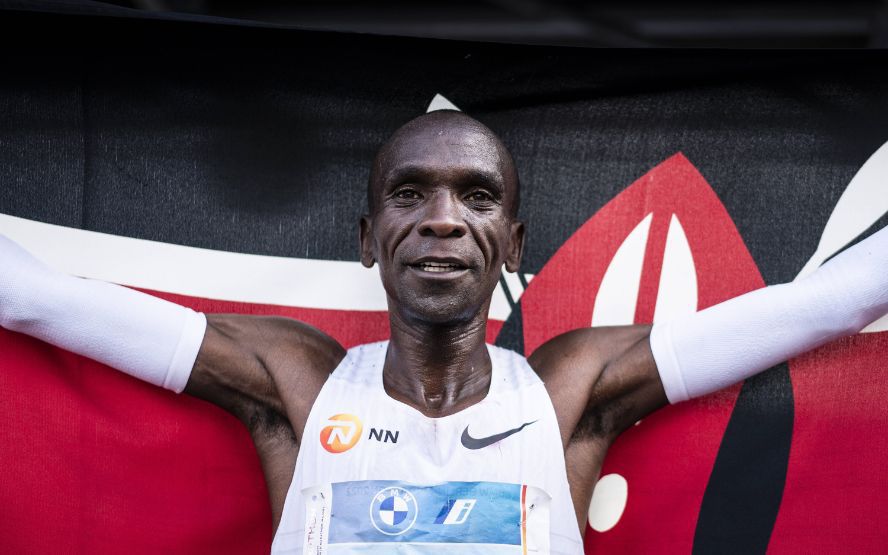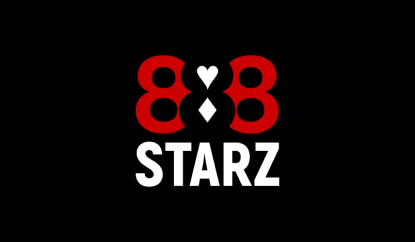The first running of the Sydney Marathon 2025 as an Abbott World Marathon Majors event delivered equal parts spectacle and substance, with Ethiopia’s Hailemaryam Kiros and the Netherlands’ Sifan Hassan smashing records while Eliud Kipchoge, in his long-awaited Australia debut, finished ninth and preached participation over podiums.
Records fall in Sydney as Kiros and Hassan shine
Sydney’s new place among the marathon elite came with a statement. Kiros produced the fastest marathon ever run on Australian soil in 2:06:06, narrowly holding off countryman Addisu Gobena by ten seconds, with Lesotho’s Tebello Ramakongoana completing the podium. His winning time wiped out the previous course best, a mark that stood from last year and had been associated with Brimin Kipkorir, who is provisionally suspended after a positive test.
| CASINO | BONUS | INFO | RATING | |
|---|---|---|---|---|
|
bonus
Deposit KES 147 for up to KES 14,745 bonus + spins!
See 10 Bonuses
|
info
BK 0000683 Industry-leading software providers, over 30 casino games, BCLB license |
|||
|
bonus
Register for up to 31,400 KSH bonus on deposits!
See 12 Bonuses
|
info
No. ALSI-112310012-F15 Unique selection of slots & games |
|||
|
bonus
New players get 50 free spins and a Ksh 2500 freebet!
See 7 Bonuses
|
info
BK 0000665 PG 0000405 Good combination of online casino and betting platform |
Hassan delivered an authority performance of her own, clocking 2:18:22 to dismantle the women’s course record by more than three minutes. The former world record holder Brigid Kosgei kept the pressure but finished 34 seconds back, and defending champion Workenesh Edesa placed third in 2:22:05. Reports from the finish underscored the scale of the performance, with coverage highlighting that she became the first woman to break 2:20 on the continent, a measure of how emphatically she reset the standard.
Kipchoge finds resilience over dominance
For Kipchoge, this was a different kind of afternoon, a test of resilience rather than supremacy. The Kenyan icon, a two-time Olympic champion with 11 Abbott World Marathon Majors victories, dropped from the lead pack around the 31 kilometer mark and never recovered, crossing in 2:08:31 for ninth. It was his first competitive outing in Oceania, months after a sixth place 2:05:25 in London that followed his first ever Olympic DNF in Paris 2024.
In the build-up, Kipchoge acknowledged both expectation and purpose. “It’s a huge pressure for me to win the race, but there’s more pressure for me to inspire more people to take up running,” he said, adding that the opportunity in Australia was special and new. Sydney’s race director Wayne Larden captured the magnetism of the moment, noting that “the only comparison would be Usain Bolt, when he raced, the stadiums were full,” before calling Kipchoge the greatest marathoner who has ever lived.
Even after the result, the message was unmistakable. “I’m happy to go across the finish line. I have nothing to prove,” Kipchoge said. “My mission is to bring all the people together. Let us surpass 55,000 from 35,000 next year to run here. It’s a beautiful course. It’s a course whereby there is no other in this world.” In one succinct thought, he reframed the narrative of a ninth place finish into a rallying call for growth.
The money on the line and why it matters
Sydney’s elevation to the majors came with meaningful financial commitment for elites. Organizers confirmed winners would receive A$30,000, with A$20,000 for second, A$10,000 for third, A$5,000 for fourth, and A$2,500 for fifth. Appearance fees were also part of the package for top names, a common feature at global marathons, and they helped attract a truly world class cast for the inaugural majors edition.
- Winner A$30,000,
- Second place A$20,000,
- Third place A$10,000,
- Fourth place A$5,000,
- Fifth place A$2,500.
In practical terms, prize structures do more than reward, they shape tactics and depth. A deeper pay window increases the incentive for racing through the final kilometers, a dynamic that was evident as both podium battles stayed live well into the last stretch of the Opera House finish.
What made the course a unique test
Sydney offered one of the most distinctive stages in the majors landscape. The route began in North Sydney, swept across the Sydney Harbour Bridge, then wound toward a postcard finish at the Opera House. With approximately 1,040 feet of total elevation gain, the course is widely considered the hilliest among the seven majors, a profile that rewards patience and rhythm management over pure time trials.
Conditions were described as favorable for endurance racing, with a light morning breeze and temperatures starting in the mid 40s Fahrenheit and rising toward the high 60s. The combination of cool air and rolling terrain created a tactical chessboard where disciplined pacing was paramount and late surges could be decisive.
Depth of the fields and key contenders
The men’s start list featured a wealth of speed and pedigree, including Vincent Ngetich, who ran a scintillating 2:03:13 in Berlin 2023 and has stacked back to back Tokyo podiums, the two-time Tokyo Marathon champion Birhanu Legese, Ethiopia’s Dawit Wolde, and 17-time NCAA champion Edward Cheserek, who arrived with a 2:05:24 best from Valencia. Kipchoge’s long-time training partner Laban Korir, runner-up in Sydney in 2023, and the Netherlands’ Bjorn Koreman added to the quality.
On the women’s side, the field was headlined by Hassan, with Kosgei and defending champion Edesa the most notable challengers. The broader roster underscored the event’s new status, with World Athletics noting one of the strongest lineups in race history, including multiple athletes with sub 2:19 credentials, a concentration that signals how quickly Sydney has become a destination for major marathon ambitions.
Local pride and the roar of Sydney
Home support mattered, and the locals made it count. Leanne Pompeani delivered a personal best 2:24:47 for seventh in the women’s race, with Olympians Jess Stenson and Lisa Weightman finishing eighth and ninth. On the men’s side, Melburnian Haftu Strintzos led the Australian charge in 14th with 2:11:27, ahead of Thomas Do Canto and former national record holder Brett Robinson, who clocked 2:15:00 for 17th.
Those results did more than populate the leaderboard, they connected Sydney’s global stage to its community. The cheers along the Bridge and the final meters by the harbor gave the race a distinctly Australian voice, an atmosphere that athletes referenced with visible gratitude.
Wheelchair racing rewrites the record book
The wheelchair divisions delivered fireworks of their own. In the men’s race, Swiss star Marcel Hug stopped the clock at 1:27:15, crushing the long-standing course record and winning by more than six minutes over Japan’s Tomoki Suzuki. In the women’s division, American Susannah Scaroni powered to 1:45:52, eclipsing the record of Madison De Rozario from last year and underlining the rapid progression of the event.
These performances matter for more than the ledger of times. They validate the course and the city as a world class platform for para-athletics, and they deepen the meaning of a majors debut that aimed to elevate every division on the program.
What the results mean for the marathon landscape
Kiros’ win, achieved on a demanding course with significant elevation, resonates beyond a single victory. It marks an athlete ready to contend with the biggest stages and the trickiest profiles, and it hints at a landscape where major victories will be earned in high stakes, tactical races rather than simply time chases. His ability to close out a tight margin against Gobena reinforces the value of composure on unfamiliar terrain.
Hassan’s record adds another chapter to an already staggering résumé. The Olympic champion held form on a course that punished overreaching, even as she admitted the last five kilometers felt brutal. Her capacity to dominate across marathons with different demands underscores a versatility that few can match, the sort of adaptability that sustains momentum across an entire season.
As for Kipchoge, the day should be read in full context. Before the gun, he spoke openly about pressure and purpose, and after the finish he reminded everyone that legacy is not only about winning. His words about growing participation to 55,000 runners next year framed the Sydney project as a movement, a vision that aligns with the city’s ambition to become a destination stop on the global running calendar.
How coverage reached fans around the world
The majors debut came with global distribution that mirrored the significance of the start lists. Coverage spanned Sub-Saharan Africa on SuperSport TV, fans in the United States watched on FloSports, MASN TV, Fight Network and CBS Sports, viewers in Europe tuned in via DAZN and EuroSport, and Shanghai TV and Fuji TV carried the race in China and Japan respectively. That reach is essential, it gives athletes a stage and gives cities a spotlight.
- Sub-Saharan Africa SuperSport TV,
- United States FloSports, MASN TV, Fight Network and CBS Sports,
- Europe DAZN and EuroSport,
- China Shanghai TV,
- Japan Fuji TV.
The last word
In the end, Sydney’s first majors chapter was bigger than any one storyline. It was the collision of records and resilience, a stunning harbor backdrop and a hilly test that exposed impatience. It was also a reminder that the sport is, at heart, about connection. As Kipchoge put it, the mission is to bring people together, and on this day the city by the bridge felt like exactly that, a meeting point for champions, challengers and the next wave of runners ready to dream big.
“This is not only my first time racing the TCS Sydney Marathon, but also my first time running in Oceania. Competing in Australia is a huge opportunity for me. Sydney looks like a stunning city with so many iconic sights. It’s going to be a new and special experience for me.”
The majors era in Sydney has begun, and based on the records that fell and the messages that resonated, it is hard to imagine a more compelling opening act.









